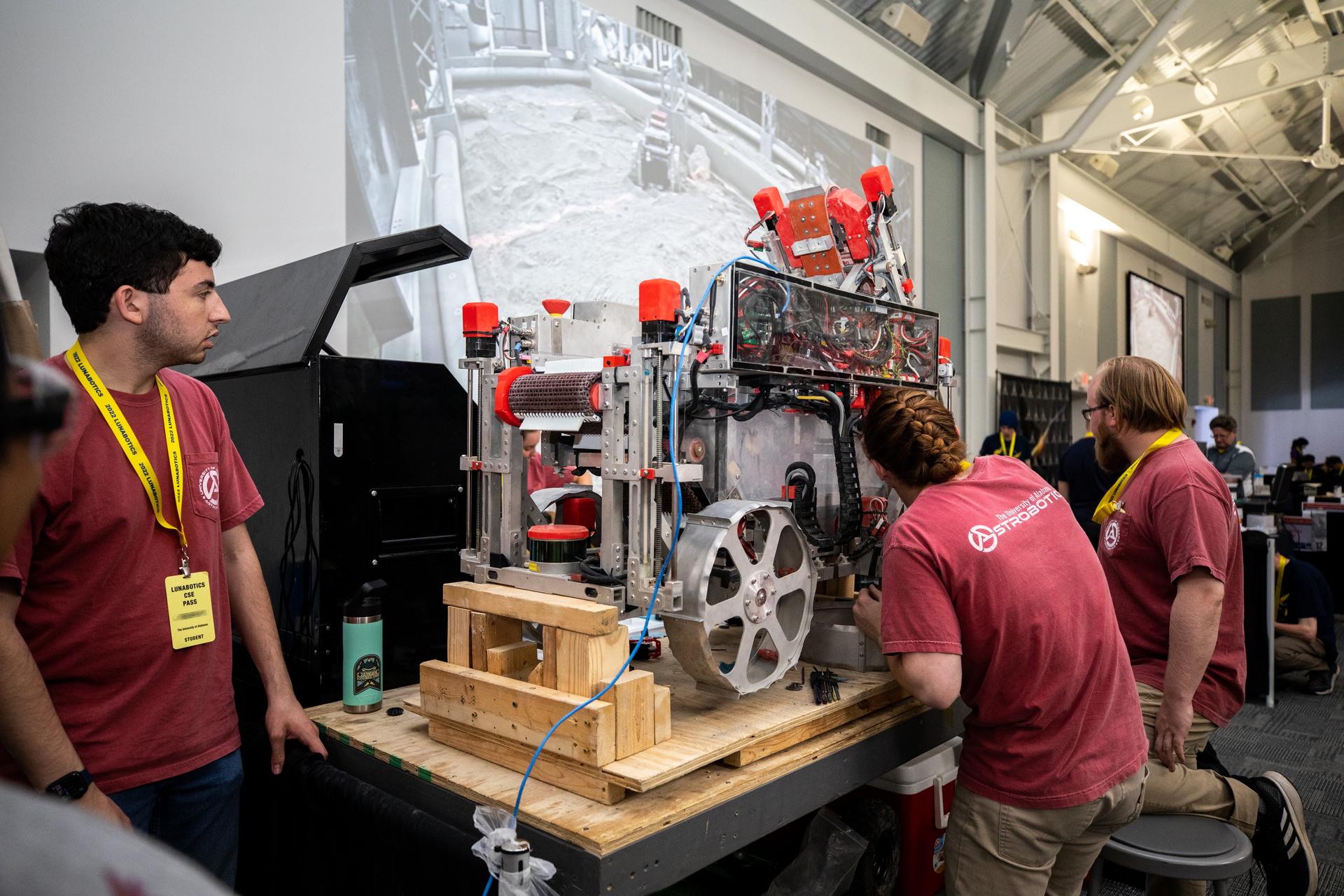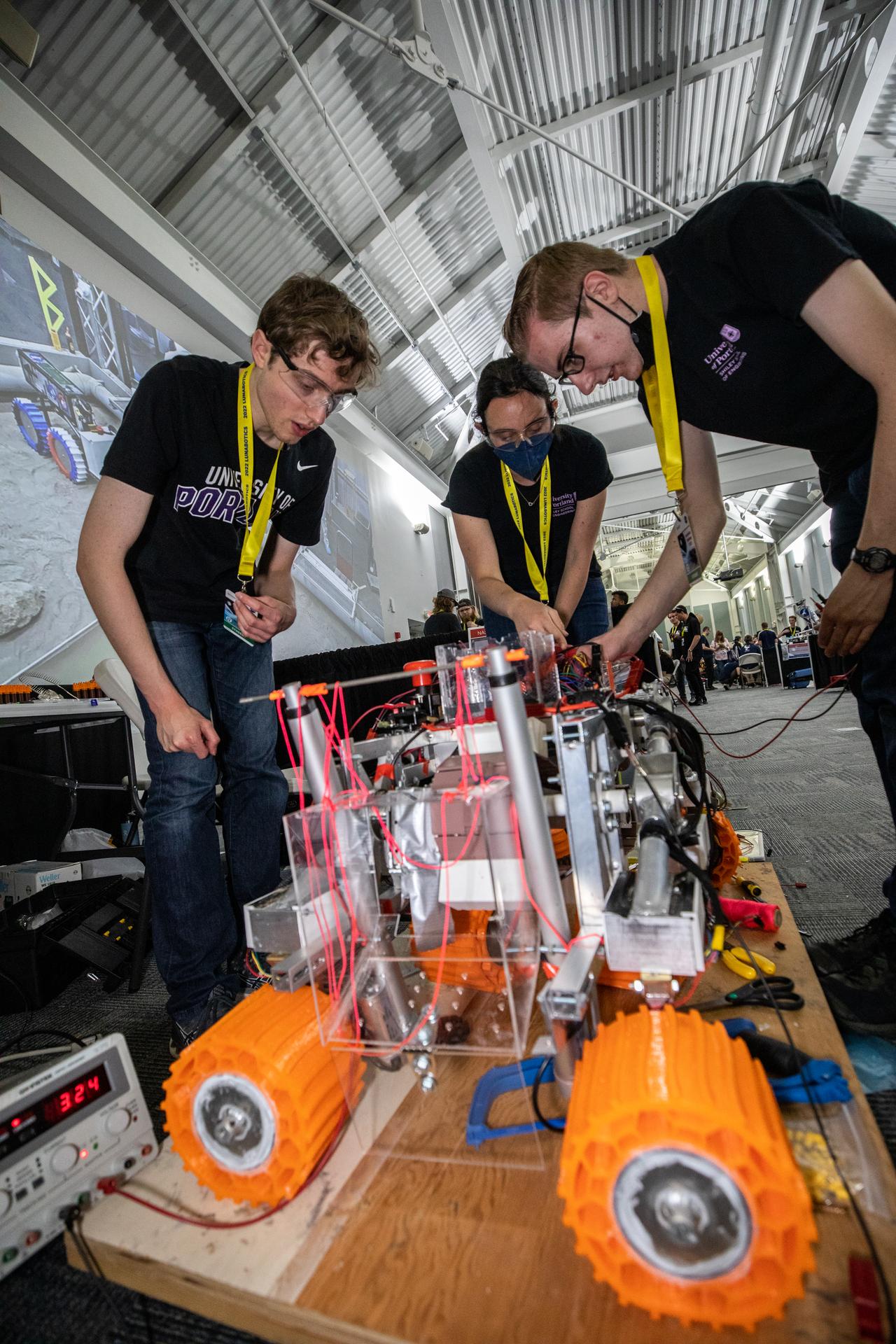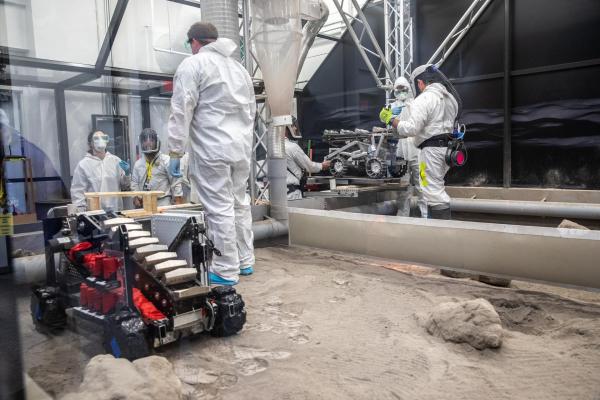If this year’s Lunabotics competition is any indication, there’s a bright future ahead for the surface of the moon — and below it.
The NASA-hosted challenge recently saw 39 teams of university students building lunar mining robots, which were tasked with digging up rocks in simulated regolith (the material making up the lunar surface) at a final competitive event.
The teams use NASA’s systems engineering process to design and build the robots at their home universities before heading to the Center for Space Education (CSE) in Florida, located on NASA’s Kennedy Space Center Visitor Complex, for the in situ demonstration of their robots. Announced on June 10, the grand prize — the Joe Kosmo Award for Excellence — went to the team from the University of Alabama, which scored the most points.

Students from the University of Alabama inspect their robot before their demonstration. Image Credits: NASA/Kim Shiflett
This year’s event marked the first time the competition has been held indoors, in a specially designed regolith simulant arena.
“An interesting effect was that the regolith simulant was drier than when it was outdoors in a tent, so the competitors noticed a change in its shear strength, causing it to fluff up, making it harder to drive on — just like the Moon!” Robert Mueller, a senior technologist and principal investigator in Kennedy’s Exploration Systems and Development Office who co-founded the competition, said in a press release. He has also served as lead judge since the first event in 2010.
Despite the challenges facing the teams with these new conditions, the young engineers — many of whom were returning contestants — persevered. And they did more than mine rocks in the simulated regolith. The Lunabotics competition also includes public outreach and the submission of engineering papers. Awards are given across these additional categories, too.

The team from the University of Portland–Oregon prepare their robot for demonstration. Image Credits: NASA/Ben Smegelsky
“Just like the Apollo missions sparked a fire of curiosity and perseverance in the hearts of students so many years ago, Artemis is challenging this generation to dream bigger, think differently, innovate more critically, and be inspired like never before,” said Kennedy Space Center director Janet Petro. “We are looking to the next generation of STEM students and encouraging their innovation, determination, and imagination as we return to the Moon and explore beyond.”
Check out the full list of winners here, and for a limited time, you can watch recordings of the competitor’s mining demonstrations here.
